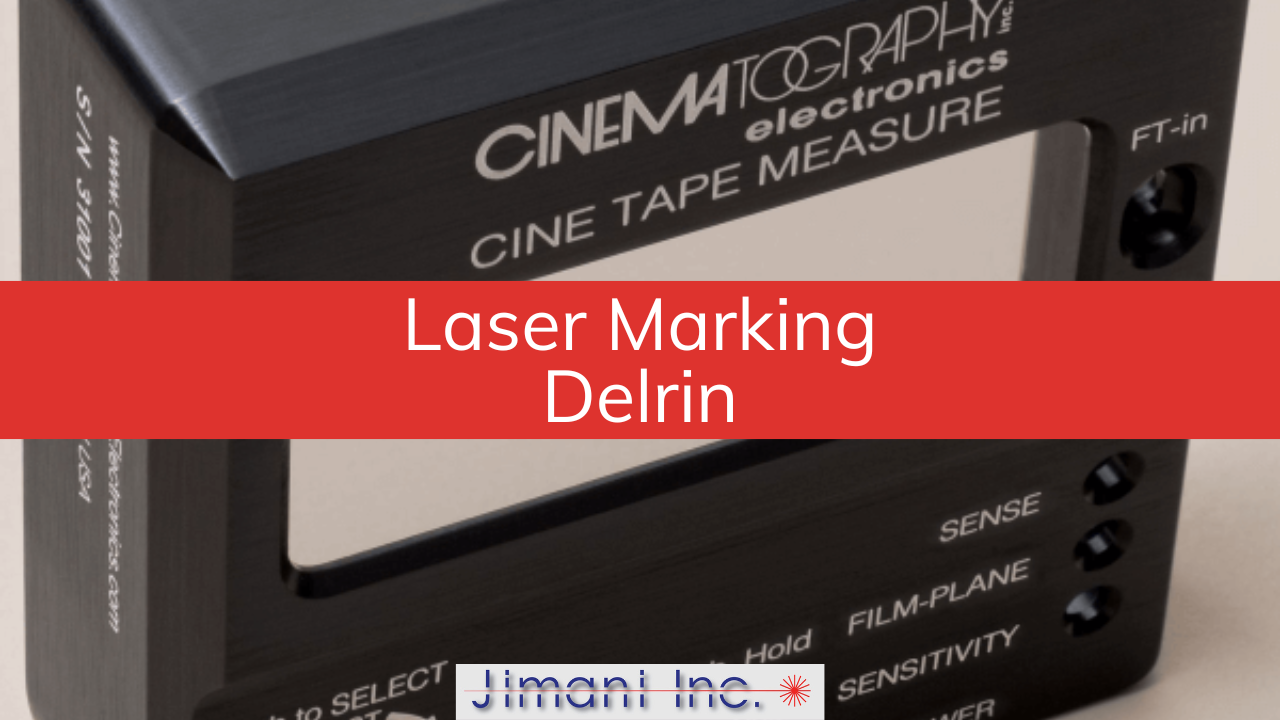Laser Engraving or Etching vs. Stain Marking vs. Ablation: What's the Difference?
The terms get used interchangeably, but they describe three distinct processes with different...

When manufacturers think about laser marking plastics, Delrin rarely comes up first in conversation. Yet this engineering thermoplastic—technically polyoxymethylene (POM) or acetal—has quietly become one of the most versatile substrates for permanent marking across industries where failure isn't an option.
Delrin combines high stiffness, exceptional dimensional stability, and natural lubricity in a polymer that machines like metal but weighs far less. These properties make it indispensable in precision applications, from insulin pen mechanisms to automotive fuel system components where even microscopic dimensional changes could prove catastrophic.
Most engineers know Delrin appears in gears and bearings, but fiber laser marking has opened surprising applications across industries. In medical devices, Delrin components in surgical instruments and drug delivery systems require permanent UDI marking that survives repeated autoclave cycles—something pad printing simply cannot guarantee. The material's chemical resistance means these marks remain readable after thousands of sterilization cycles.
The automotive industry marks Delrin fuel system components, seat belt mechanisms, and door handle assemblies where traditional ink marking would fail within months of UV exposure and temperature cycling. Consumer electronics manufacturers discovered Delrin's low outgassing properties make it ideal for precision components inside smartphones and cameras, where laser marking provides permanent traceability without contamination risks.
In food and beverage equipment, Delrin's FDA compliance combined with laser marking eliminates ink contamination concerns. Valve components, conveyor parts, and metering mechanisms carry permanent marks that survive caustic wash-down procedures that would destroy labels or printed marks within days.
The economics of marking Delrin shift dramatically when you factor in total lifecycle costs. Pad printing on Delrin might cost $0.05 per part for the ink and pad wear, but requires 30-60 seconds of drying time and fails FDA cleanroom requirements. Hot stamping runs $0.03 per impression but creates stress points that can initiate crack propagation in high-stress applications.
Fiber laser marking Delrin typically takes 2-4 seconds per part with zero consumables. While pad printing might seem cheaper per piece initially, one pharmaceutical manufacturer found their true cost exceeded $0.40 per part when factoring in rejected parts from smeared ink, production delays for ink changes, and compliance documentation for ink lot tracking.
The marking speed advantage becomes even more pronounced with complex graphics or variable data. A 2D data matrix code that takes 45 seconds to pad print marks in under 3 seconds with a 30-watt fiber laser. Serial numbers that require screen changes between batches for traditional printing flow seamlessly through laser systems with no changeover time.
Engineers often consider nylon, UHMW, or even aluminum for applications requiring permanent marking. The comparison reveals why Delrin frequently wins. Nylon absorbs moisture, causing dimensional changes that affect mark clarity and part tolerance. A laser-marked nylon part stored in 80% humidity can show 2-3% dimensional change within weeks, distorting both the mark and critical features.
UHMW provides excellent wear resistance but laser marks poorly, producing low contrast without specialized additives that compromise its chemical resistance. Aluminum marks beautifully but weighs three times more than Delrin and costs significantly more to machine for complex geometries.
When one aerospace manufacturer switched from aluminum to laser-marked Delrin for non-structural cockpit components, they reduced part weight by 65% and machining time by 40%, while maintaining all traceability requirements through permanent laser marking.
Delrin's response to fiber laser marking depends heavily on its formulation. Natural Delrin produces light gray marks with 30-watt fiber lasers using pulse frequencies around 25-30 kHz. Black Delrin achieves stunning white contrast marks that rival the readability of marked anodized aluminum. Glass-filled grades require slightly different parameters but produce equally permanent marks.
The material's low thermal conductivity means heat-affected zones remain minimal—typically under 0.001 inches. This precision allows marking near critical tolerances without affecting part functionality. One medical device manufacturer successfully marks 0.015-inch tall text on Delrin components with ±0.0005-inch tolerances just 0.010 inches from the marked area.
Larry Barton, president of Cinematography Electronics, discovered these advantages firsthand: "I am a stickler for details, so choosing a laser engraver for our high-end cinema equipment products was not an easy decision. We have finally found an engraver we feel confident working with. Jimani has a well-organized laser engraving facility with well-trained, qualified personnel who understand the precision our industry demands.
All of our anodized aluminum and Delrin parts are carefully handled and laser marked to specifications that other marking methods simply couldn't achieve. As someone who cares deeply about the quality of engraving, I have been extremely satisfied with the precision and consistency Jimani delivers. The work has been precise and timely—they even handle pickup and delivery. I have always believed that one good vendor is worth 10 customers. Jimani goes beyond; they are a fantastic vendor for us."
The choice to laser mark Delrin instead of alternative materials or traditional marking methods comes down to application requirements. When permanent traceability, chemical resistance, and dimensional stability matter, Delrin marked with fiber laser technology delivers unmatched performance. The initial investment in laser marking capability pays for itself through eliminated consumables, reduced reject rates, and simplified compliance documentation.
For manufacturers evaluating Delrin laser marking, consider sending sample parts for test marking. The results frequently reveal possibilities that weren't apparent from specifications alone—from contrast levels that exceed expectations to marking speeds that transform production economics.
Ready to explore how laser marking can transform your Delrin components? Contact Jimani Inc. to discuss your application or request sample marking on your parts.
The terms get used interchangeably, but they describe three distinct processes with different...
Marking aluminum is one of the most common applications for a fiber laser marking system. This is...
Cinematography Electronics manufacturers precision motion picture equipment. Their president Larry...